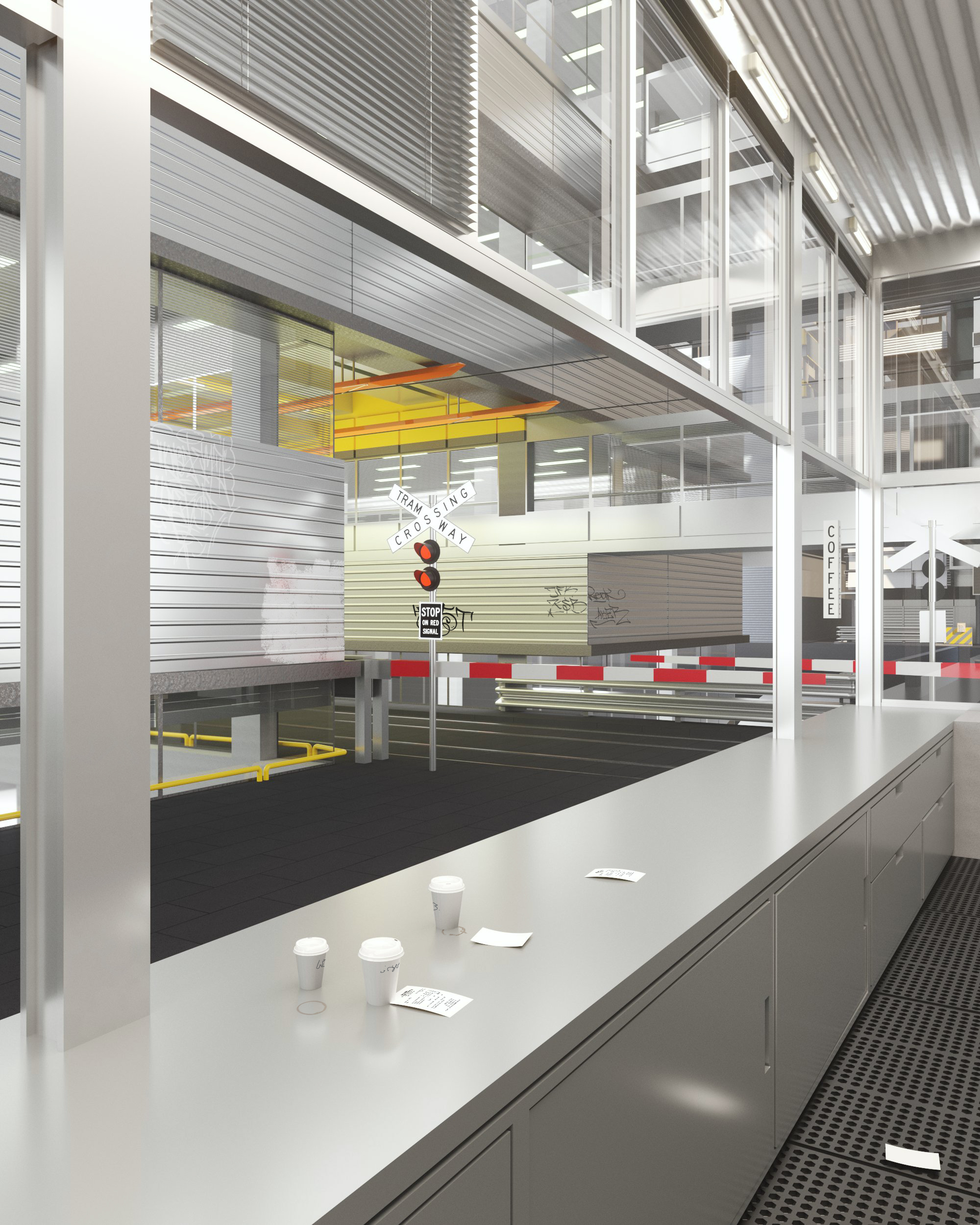Greyness
By Liam Oxlade
This project utilises the spatial effect of the Back of House to address a hostility towards our urban environment - a frustration stemming from the incompleteness of our urban experience. It uses a technical greyness to omit an orthodoxy, namely, the hierarchy of maintenance elements as they relate to their Front of House counterpart.
The imagery amplifies the existence of personnel involved in the maintenance and servicing of our cities, and by dignifying these elements – prompt us to understand better how they function and the collective role we have to play in their working.
It asks how our infrastructure might work harder to encourage an affection towards those parts of the city that are typically seen as necessary to conceal. And it asks how our cities might provide access to the immense diversity and energy of the natural world; learning from those divisions of it that suffer less for our interest in them.




︎︎︎
Note from the editor:
Liam Oxlade describes one ambition of his project: "to omit an orthodoxy, namely, the hierarchy of maintenance elements as they relate to their Front of House counterpart." His use of imagery displays an eerie realism; it renders a city where Back of House elements occupy the same ontological status as our parks, rivers and beaches. In glorifying what are strictly elements of up-keep, he prompts us to understand better how our city functions, and the collective role we have to play in its successful functioning.
Note from the editor:
Liam Oxlade describes one ambition of his project: "to omit an orthodoxy, namely, the hierarchy of maintenance elements as they relate to their Front of House counterpart." His use of imagery displays an eerie realism; it renders a city where Back of House elements occupy the same ontological status as our parks, rivers and beaches. In glorifying what are strictly elements of up-keep, he prompts us to understand better how our city functions, and the collective role we have to play in its successful functioning.
